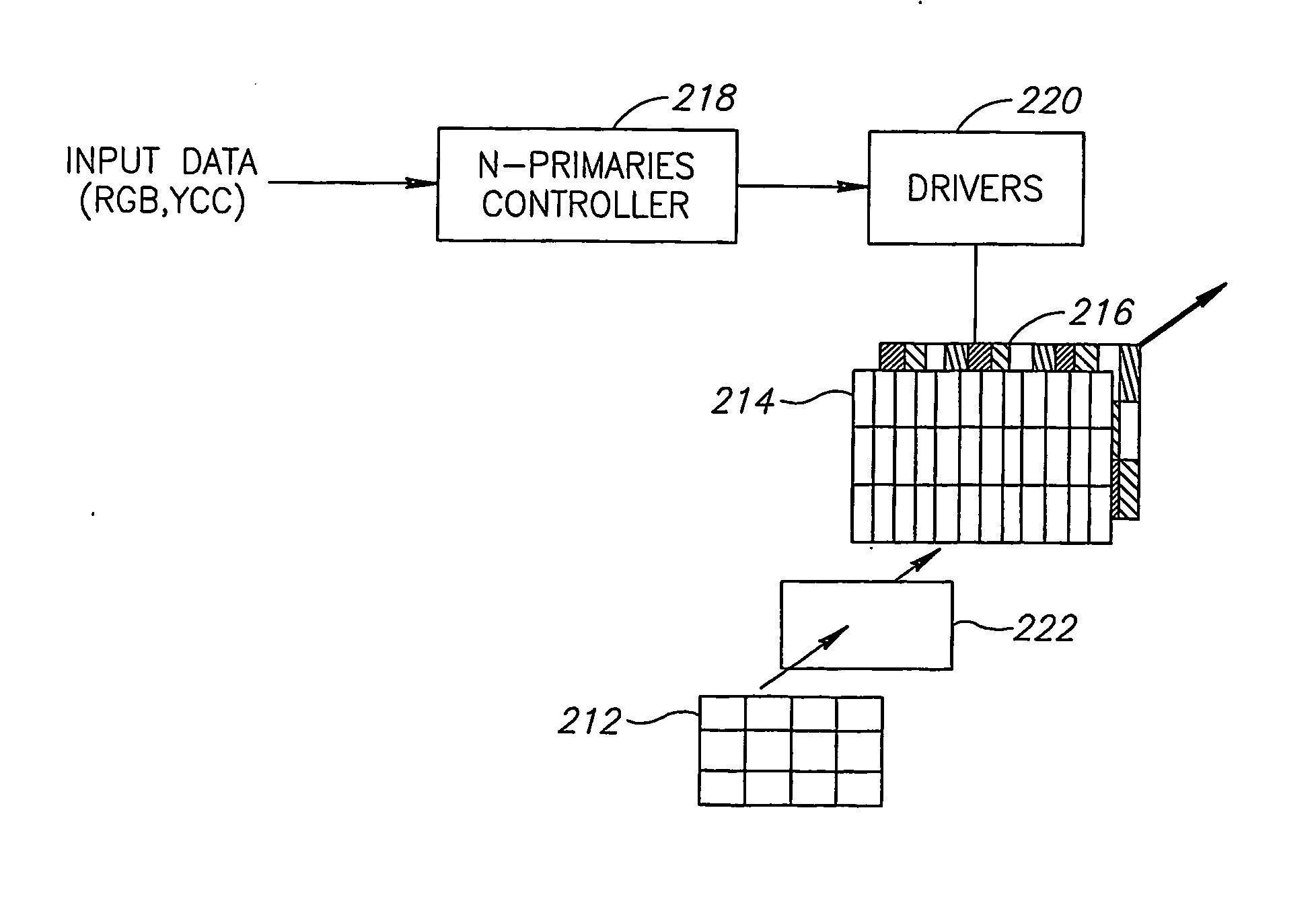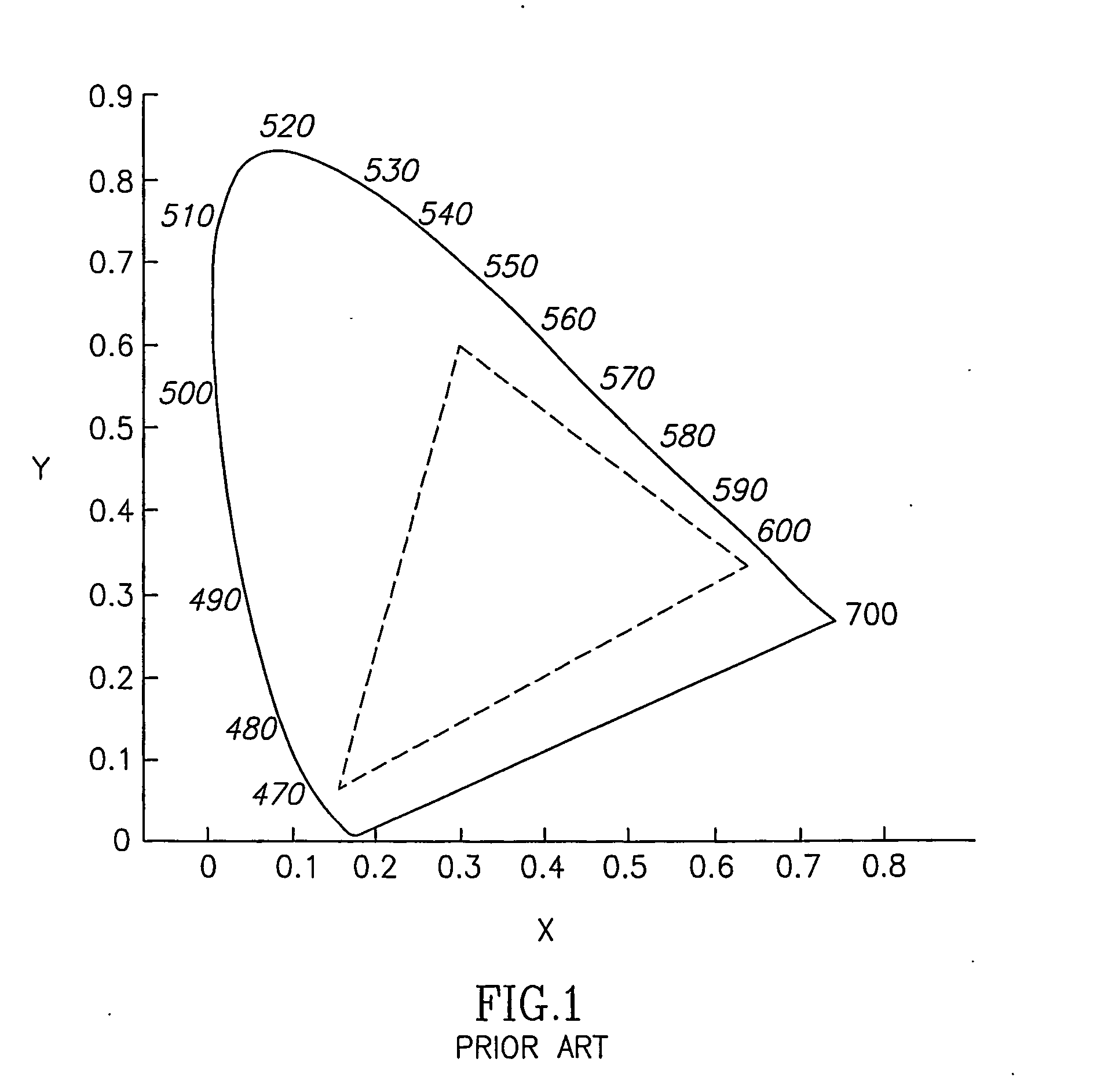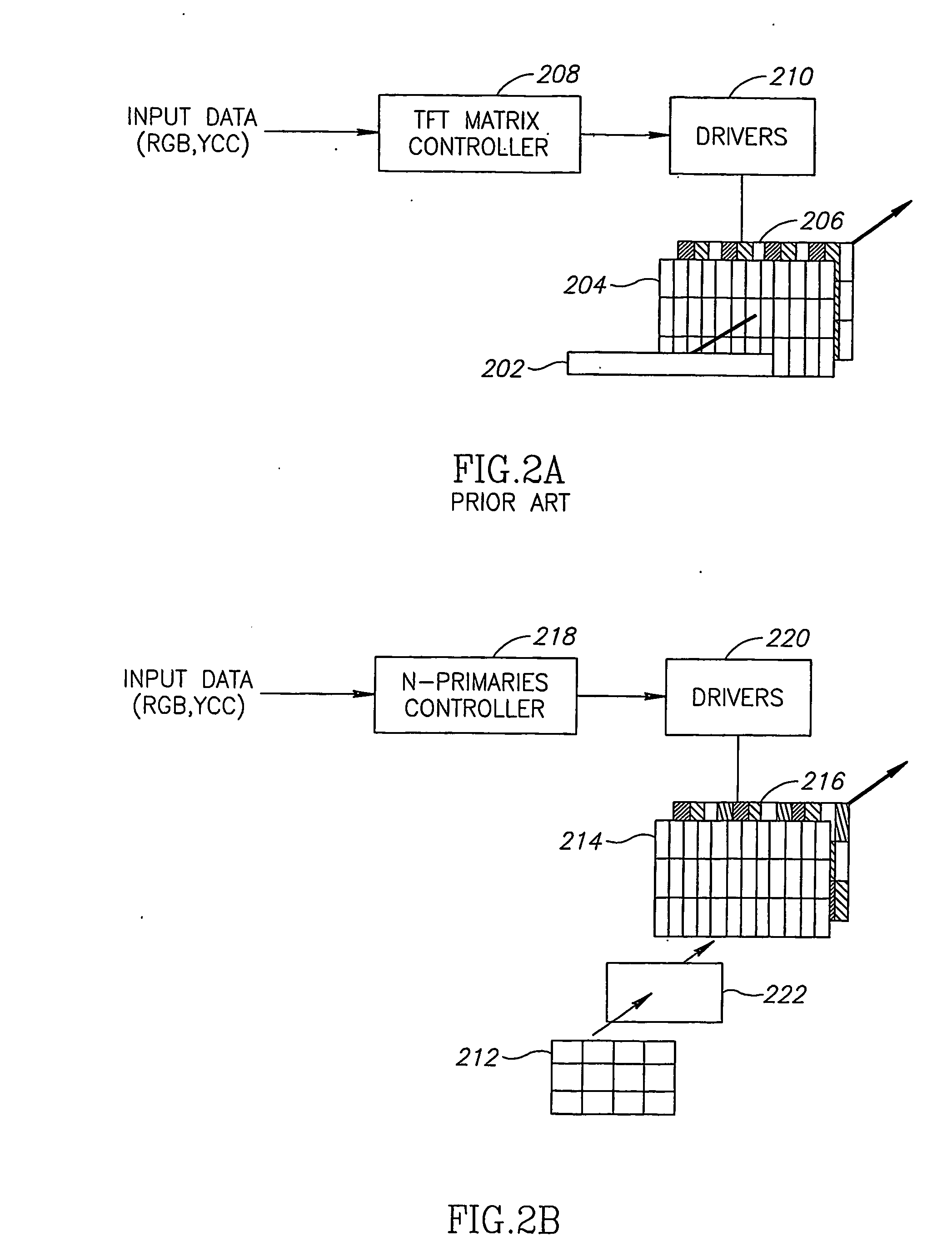Multi-primary display with spectrally adapted back-illumination
a back-illumination and multi-primary technology, applied in the field of color display devices, systems and methods, can solve the problems of not fully representing all visible color variations, chromaticity alone cannot display many colors perceived by humans, and lcd technology is also used in non-portable devices, so as to achieve sufficient coverage and maximize brightness.
- Summary
- Abstract
- Description
- Claims
- Application Information
AI Technical Summary
Benefits of technology
Problems solved by technology
Method used
Image
Examples
Embodiment Construction
[0008] Many colors seen by humans are not discernible on standard red-green-blue (RGB) monitors. By using a display device with more than tree primary colors, the reproducible color gamut of the display is expanded. Additionally or alternatively, the brightness level produced by the display may be significantly increased. Embodiments of the present invention provide systems and methods of displaying color images on a display device, for example, a thin profile display device, such as a liquid crystal display (LCD) device, using more than three primary colors.
[0009] Exemplary embodiments of the invention provide improved multi-primary display devices using more than three sub-pixels of different colors to create each pixel. In embodiments of this aspect of the invention, the use of a back-illumination source including an array of at least four light producing elements, e.g., Light Emitting Diodes (LEDs), having at least four different colors, and the use of four or more different co...
PUM
 Login to View More
Login to View More Abstract
Description
Claims
Application Information
 Login to View More
Login to View More - R&D
- Intellectual Property
- Life Sciences
- Materials
- Tech Scout
- Unparalleled Data Quality
- Higher Quality Content
- 60% Fewer Hallucinations
Browse by: Latest US Patents, China's latest patents, Technical Efficacy Thesaurus, Application Domain, Technology Topic, Popular Technical Reports.
© 2025 PatSnap. All rights reserved.Legal|Privacy policy|Modern Slavery Act Transparency Statement|Sitemap|About US| Contact US: help@patsnap.com



